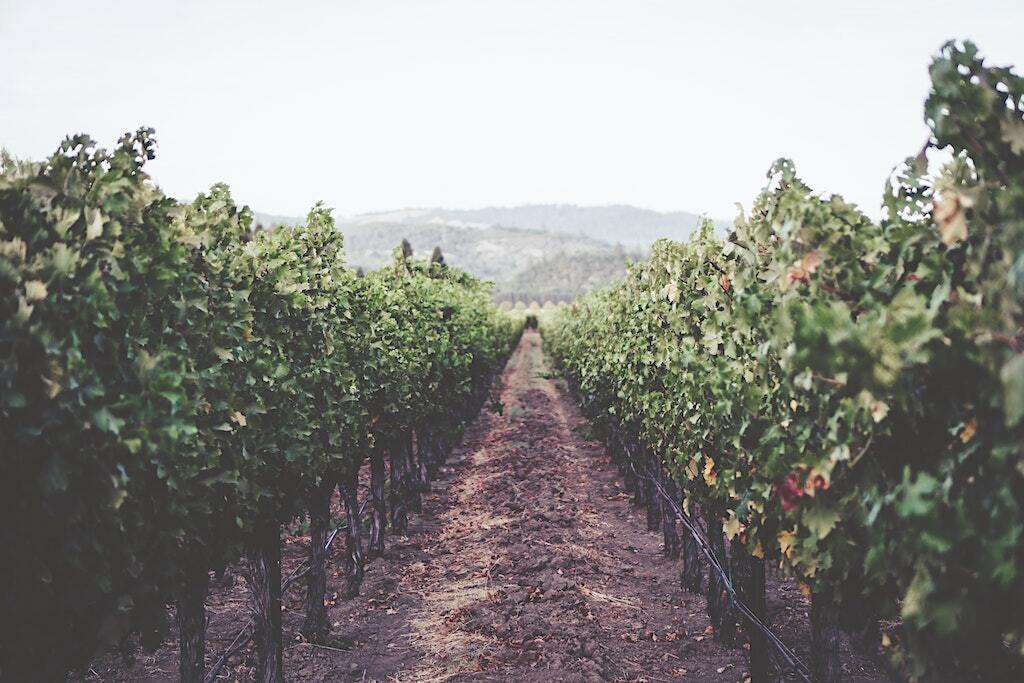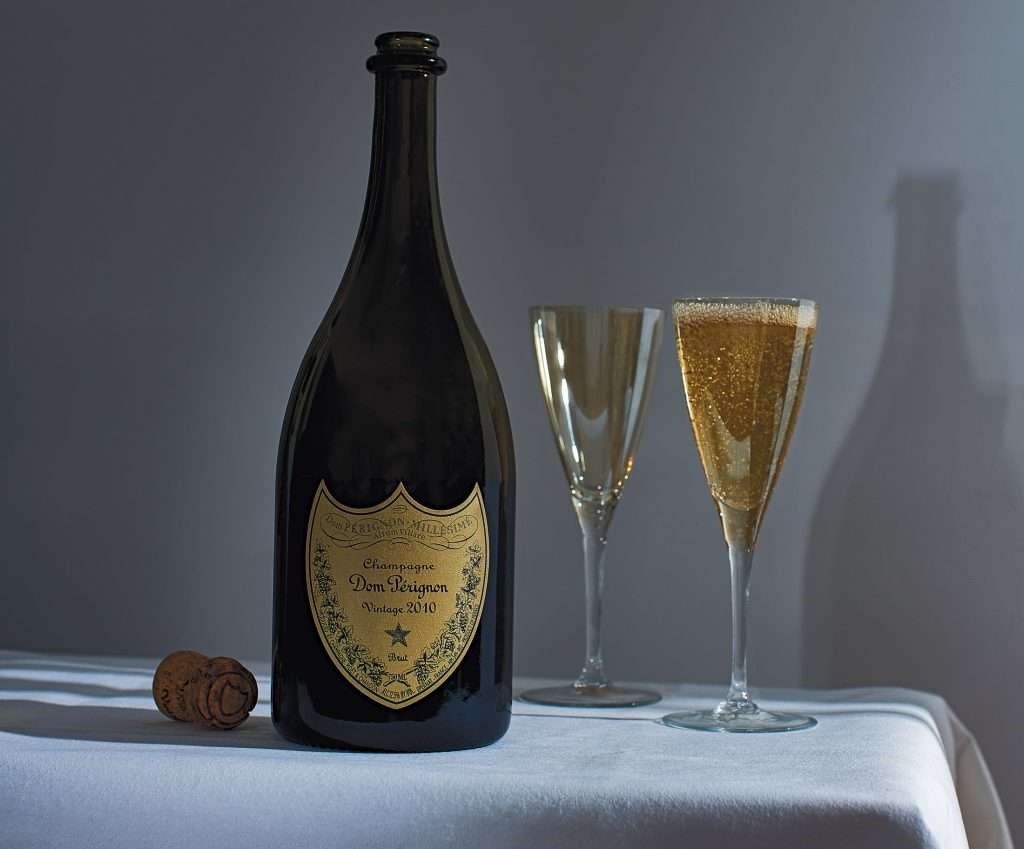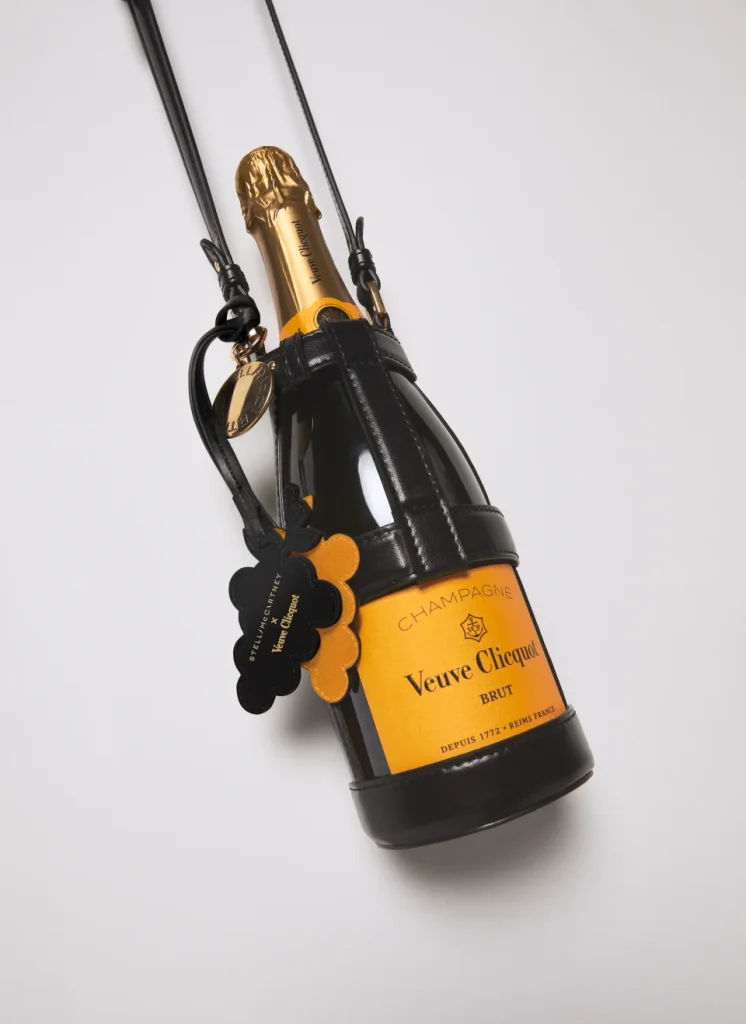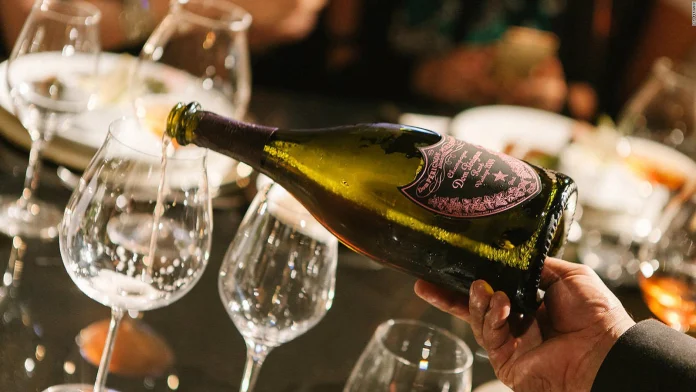When you’re popping the cork on a bottle of champagne, you’re also opening up a window into the changing world of viticulture. Just how sustainable are the world’s top luxury champagnes?
A good bottle of champagne should set you back at least $100. But a really good bottle of champagne? Well, that can set you back thousands of dollars. To the connoisseur, taste warrants the hefty price tag, though. But there may be other reasons to splurge on a top-shelf bottle of champagne, particularly as the world’s leading luxury labels make efforts to improve their sustainability.
France’s Champagne region goes sustainable
The iconic Champagne region of France, is undergoing a significant transformation. This shift is driven by the country’s acute awareness of environmental impact and the pressing need to adopt sustainable practices. The Champagne region, renowned for its exquisite sparkling wine, is now at the forefront of France’s sustainable viticulture, setting an example for wine regions worldwide.
Champagne’s sustainability journey began with a comprehensive carbon footprint assessment, making it the first wine-growing region to undertake such a measure. The findings have catalyzed a commitment to reduce the region’s carbon footprint by 25 percent by 2025 and 75 percent by 2050. In alignment with these goals, approximately 20 percent of the region has already achieved eco-friendly certification, with the ambitious target of reaching 100 percent in the next decade.
“Of course we are all worried about climate change,” Vitalie Taittinger, president of Taittinger, told Decanter in 2019. “Global warming is changing the way we are working. We are not following the same calendar as before.”
The need for sustainable practices in Champagne is further underscored by the palpable effects of climate change. Unusually dry weather and low rainfall have led to early harvests, a phenomenon becoming increasingly common due to rising global temperatures. This climatic shift, while temporarily beneficial in producing top-quality grapes, is not sustainable long-term, prompting the industry to adapt and innovate.

One of the most significant developments in Champagne’s sustainability journey is the focus on hybrid grapes. These grapes, developed through a 15-year program, are designed to be resistant to heat, drought, and damaging fungus, thereby reducing reliance on pesticides and better adapting to climate change. This initiative not only aids in environmental preservation but also ensures the maintenance of Champagne’s unique taste and style.
Moreover, the region has made strides in reducing the use of ‘vine protection products’ and fertilizers by 50 percent, acknowledging the importance of soil health and its impact on overall ecosystem sustainability. The Champagne houses have also committed to reusing 100 percent of by-products and recycling 90 percent of waste, demonstrating a comprehensive approach to sustainability that goes beyond mere reduction and recycling. Most recently, LVMH label Veuve Clicquot demonstrated an example of upcycling its waste by turning it into a leather-like material used by eco designer Stella McCartney.
The commitment to sustainability in Champagne is not just an individual effort by a few houses but a collective move by the entire region. The goal, set by the Comité Champagne, is to have all producers certified as sustainable by 2030. This widespread adoption of sustainable practices is evidence of a deep-rooted understanding that the future of Champagne is inextricably linked to the health of its environment.
In addition to these efforts, the Champagne region is also focusing on key areas such as energy, biodiversity, and water management. These are all measured by the region’s carbon footprint and include initiatives like limited use of chemical treatments, soil regeneration, and innovative water management practices.
Luxury Champagne labels bubble up their eco efforts
Dom Pérignon is one of the most well-known names in champagne. But its sustainability commitments are less recognizable. One notable initiative is the collaboration with four world-class chefs — Alain Ducasse, Albert Adrià, Romain Meder, and Jessica Préalpato — to create ADMO, a sustainable fine-dining restaurant in Paris overlooking the Eiffel Tower. The restaurant emphasizes meat-free dishes, focusing on cereals, vegetables, and sustainably produced wines and spirits.
In a recent interview, Vincent Chaperon, who became Chef de Cave at Dom Pérignon in 2019, said the company is reinventing itself every year and changing vine-growing and winemaking in the mid- and long-term, in order to address climate change.

“Every year, we’re facing new climatic conditions which impact the vine growth and the grapes’ quality. We’ve been experiencing earlier harvests in August, warmer temperatures, heatwaves, and drought,” Chaperon said. “To respond to such situations, we’ve been adapting our grapes selection, our picking strategies. We’ve been experimenting with new processes such as oxygen management on juices. We’ve been adjusting others, like decreasing the dosage. Finally, we’ve been improving our monitoring by developing data acquisition which helps to make the right decisions at the right moment.
“We’re also changing our vine-growing and winemaking to continue minimising our impact on the climate. More than ever, we promote biodiversity in the vineyard. We consider the vine not as a monoculture, but as a complex and complete system whose balance we have a responsibility to preserve. We continue to reduce our energy impact at the source. This includes everything from investing in electric tractors to experimenting with ways to recover the carbon emitted during our fermentation process.”
Veuve Clicquot is also focusing on various aspects of its operations to minimize environmental impact. This commitment is evident in both their production processes and packaging innovations.
The luxury champagne label has been proactive in sustainable viticulture since 1990, marking the beginning of a journey towards more eco-friendly practices. Over the years, it has implemented numerous initiatives to reduce its ecological footprint. These efforts include treating all press wastewater (since 1998), implementing selective sorting for waste (2001), achieving carbon footprint objectives (2002), and receiving ISO 14001 certification (2004), which underscores their commitment to environmental management.
It’s not just the grapes that matter: eco packaging
Veuve Clicquot has been promoting eco-design in packaging since 2006 and introduced its first rainwater recovery system in 2007. It has also been integrating renewable energies into its operations since 2009. In 2013, it created the first Champagne packaging made from potato starch, followed by the launch of Naturally Clicquot 2 in 2014, and the creation of the first-ever Champagne packaging made from grape skin in 2015.
Last year, Veuve Clicquot partnered with Canopy, a global environmental NGO, to launch a pioneering packaging system. This new packaging, part of the Ecoyellow gift box series, is made from 50 percent recycled paper and 50 percent hemp. This initiative is a significant step towards sustainable luxury, as it reduces the carbon footprint, is lighter than traditional champagne boxes, and demonstrates how luxury brands can maintain their status while making eco-friendly choices.

The hemp used in the Ecoyellow gift box is locally sourced in the Champagne region, further emphasizing the brand’s commitment to local and sustainable practices. This approach aligns with the Pack4Good initiative by Canopy, which aims to eliminate Ancient and Endangered Forests from packaging supply chains and develop low-carbon, circular alternatives.
Taittinger’s approach to sustainability extends to its packaging as well. While it is challenging for Cchampagne to reduce bottle weight due to the pressurized nature of the product, Taittinger has made strides in this area. The brand aims to reduce the total weight of its range of packaging, with 80 percent of the glass coming from recycled sources. It has also successfully transitioned to lighter bottles, achieving a 7 percent reduction in weight. Furthermore, all waste packaging materials, such as cardboard, paper, glass, and steel from capsules, are recycled. Taittinger is continually in discussions with its suppliers to find more sustainable working methods.
Climate research, better grapes
Like its sister label Veuve Clicquot, Moët & Chandon has been taking significant strides toward sustainability, reflecting a deep commitment to environmental stewardship. One of the key initiatives undertaken by Moët & Chandon is the establishment of a €20 million research facility dedicated to sustainable viticulture in the Champagne region.
The facility focuses on critical areas like microbiology for yeast selection and adaptation, CO2 sequestration in the fields, and developing grape varietals and rootstocks that are resistant to climate change and mildew. Such research is essential for adapting to the challenges posed by climate change and ensuring the continued excellence of their products.

In addition to focusing on its own lands, Moët & Chandon collaborates with a vast community of more than 2,000 winegrowers and local cooperatives. This effort aims to promote biodiversity across the entire region, helping partners achieve sustainable viticulture certifications to preserve Champagne’s exceptional terroir for future generations. Currently, about 20 percent of the estate of its wine-growing partners, approximately 848 hectares, is certified as sustainable viticulture.
The label has also made strides in organic and biodynamic viticulture; it has been converting ten hectares to organic certification since 2017, evaluating risks and opportunities at each stage of the process. This effort extends from the vineyard to the finished product, while also exploring biodynamic practices on some plots.
Moët & Chandon’s Winegrowing Director, Carlos Danti says that the label needs to be “very careful about the way we treat the land we use.”
“[I]t is super important to make sure the wines we are making today, we can make tomorrow,” Danti says.
Felix Bocquet, Moët & Chandon’s Director of Technical Development and Sustainable Viticulture told Forbes that in the last 12 years the combination of climate hazards, aging vines, and increased overall temperatures has resulted in a 26 percent decrease in yields. Bocquet says the label is even more concerned about its vines “becoming less and less adapted to this environment,” he said. “We are approaching the limit of our ecosystem if global warming continues at this rate.”

Moët & Chandon’s commitment to sustainability extends beyond viticulture — it has partnered with Formula E, the world’s first fully electric, single-seater motorsport championship. This partnership aligns with its dedication to sustainability, technology, and innovation. Furthermore, Moët & Chandon has shown a commitment to reducing its carbon footprint by adopting green technologies. Since 2012, it has invested in electric straddle tractors for use in viticulture, recycled 99 percent of its waste, and used nearly 100 percent green electricity. It has also inaugurated a new winemaking facility in Oiry, which is the first in France to be awarded with the label of “High Environmental Quality”. This facility is a benchmark in sustainability and high technology, helping the House to reduce its carbon footprint and water usage.
For Taittinger, tackling the climate crisis doesn’t mean pursuing third-party certifications. “We want to be free and we want to be 100 percent sustainable by ourselves,” Taittinger told Decanter. “We don’t want to follow that just for certification’s sake.”
In 2017, Taittinger received two significant environmental accreditations: the ‘Viticulture Durable en Champagne’ (Sustainable vine-growing in Champagne) and the Haute Valeur Environnementale (HVE – High environmental sustainability). These accreditations recognize Taittinger’s efforts in sustainable viticulture, including responsible water management, sensible use of fertilizers, and waste control to preserve the biodiversity of fauna and flora in the vineyards.
In the vineyards, Taittinger is a leader in Champagne growing, typically using about half the amount of fertilizers, herbicides, and pesticides compared to conventional growers. Taitinger wholly owns half of its vineyard base, giving it full control over the treatments used on the soil and vines. Notably, 90 percent of Taittinger vineyards are planted with grass, which eliminates the need for herbicides. The label continues the tradition of using horses to manage vegetation growth between the vines. This practice is both rare and natural in today’s world. Taittinger also focuses on precision viticulture, allowing for individual vine management, and has moved to ‘selection massale’ for vine stock, sourced from its own vineyards. The company also reports participating in the regional trend of replanting hedges around vineyards, which encourages the growth of natural pesticides.

Krug, another highly regarded luxury Champagne house, has also demonstrated a strong commitment to sustainability. Its approach encompasses various aspects of operations to minimize environmental impact. Krug received ISO certification in environmental practices, energy management, and food safety management in 2004, highlighting a long-standing commitment to sustainable viticulture. Additionally, Krug has implemented significant changes, including transitioning to electric tractors to avoid adding CO2 and becoming meticulous about the picking date to gain freshness in their products. These changes are part of Krug’s culture of sustainability, which includes caring for water with a 30 percent usage reduction and decreasing its electricity use.
Earlier this year, the Leonardo DiCaprio-backed Telmont Champagne, published its first sustainability report. Aiming to be the first climate-positive Champagne producer by 2030 and achieve a net positive status by 2050, Telmont is at the forefront of eco-friendly champagne production. As emphasized by Telmont’s president Ludovic du Plessis, transparency in vine cultivation and wine production is key to sustainable practices. The brand is advancing towards fully organic agriculture, with 60 percent of its estate and partnering winegrowers either already certified organic or in the process of conversion.
Telmont’s approach to organic farming, despite potentially yielding fewer grapes, is seen as crucial to genuinely respecting and safeguarding their terroir. Leading by example in reducing packaging waste, Telmont was the first Champagne house to eliminate gift boxes and unnecessary packaging. It now uses green bottles composed of 85 percent recycled glass, a significant improvement over clear glass bottles that typically contain no recycled material. Additionally, the brand has switched from air to sea and road transportation, further reducing its carbon footprint.
Related on Ethos:


